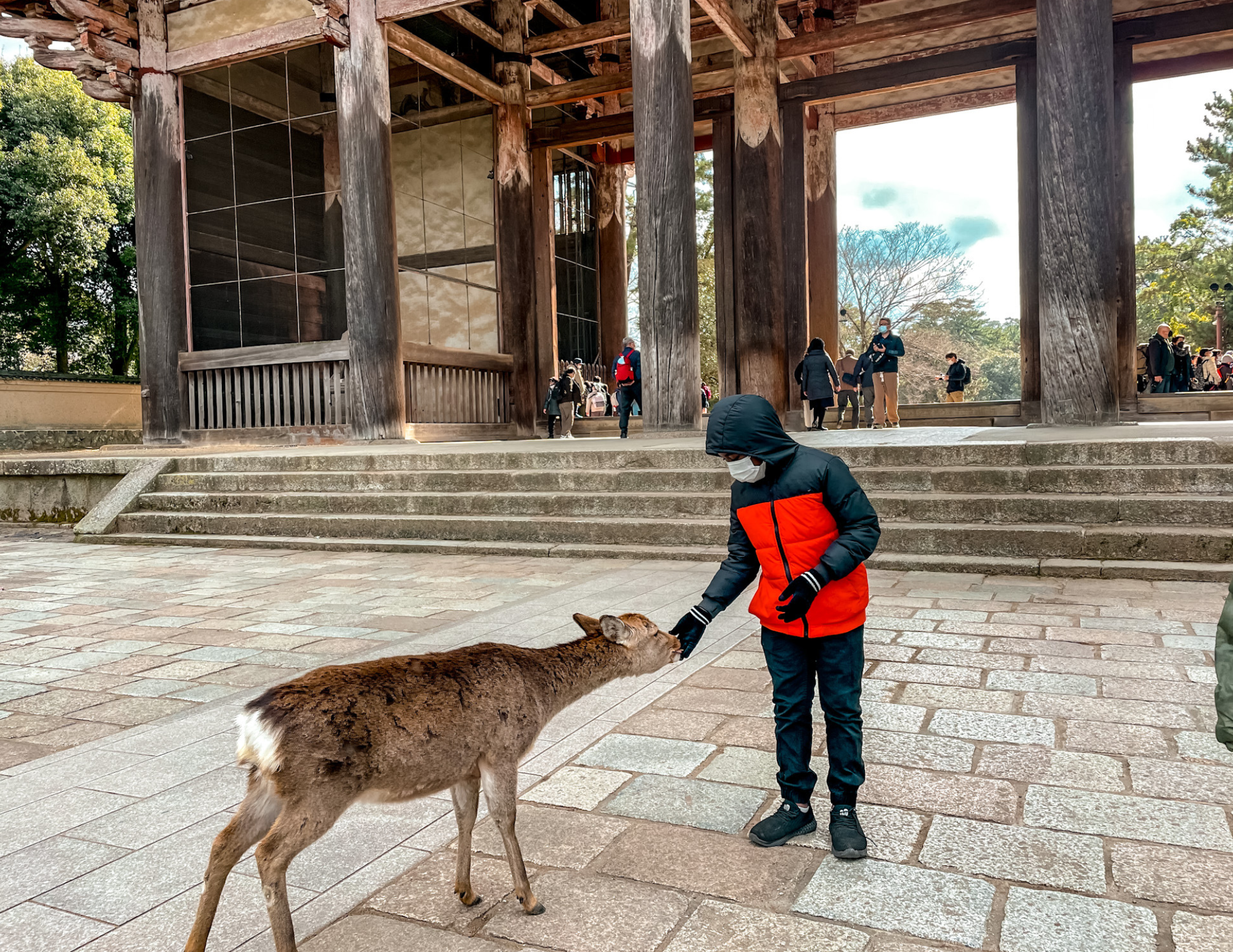I took the train - under an hour - to see deer. Not just see them… I wanted to test the rumor: if you bow first, the deer bow back in appreciation. And they DID. It was the coolest thing ever, 10/10 recommend for your inner child. We made this day trip to visit the first capital of Japan, and Nara delivered: quiet temple grounds, pockets of forest, and yes - nearly 1,200 wild deer who act like they own the place (because honestly, they kind of do).
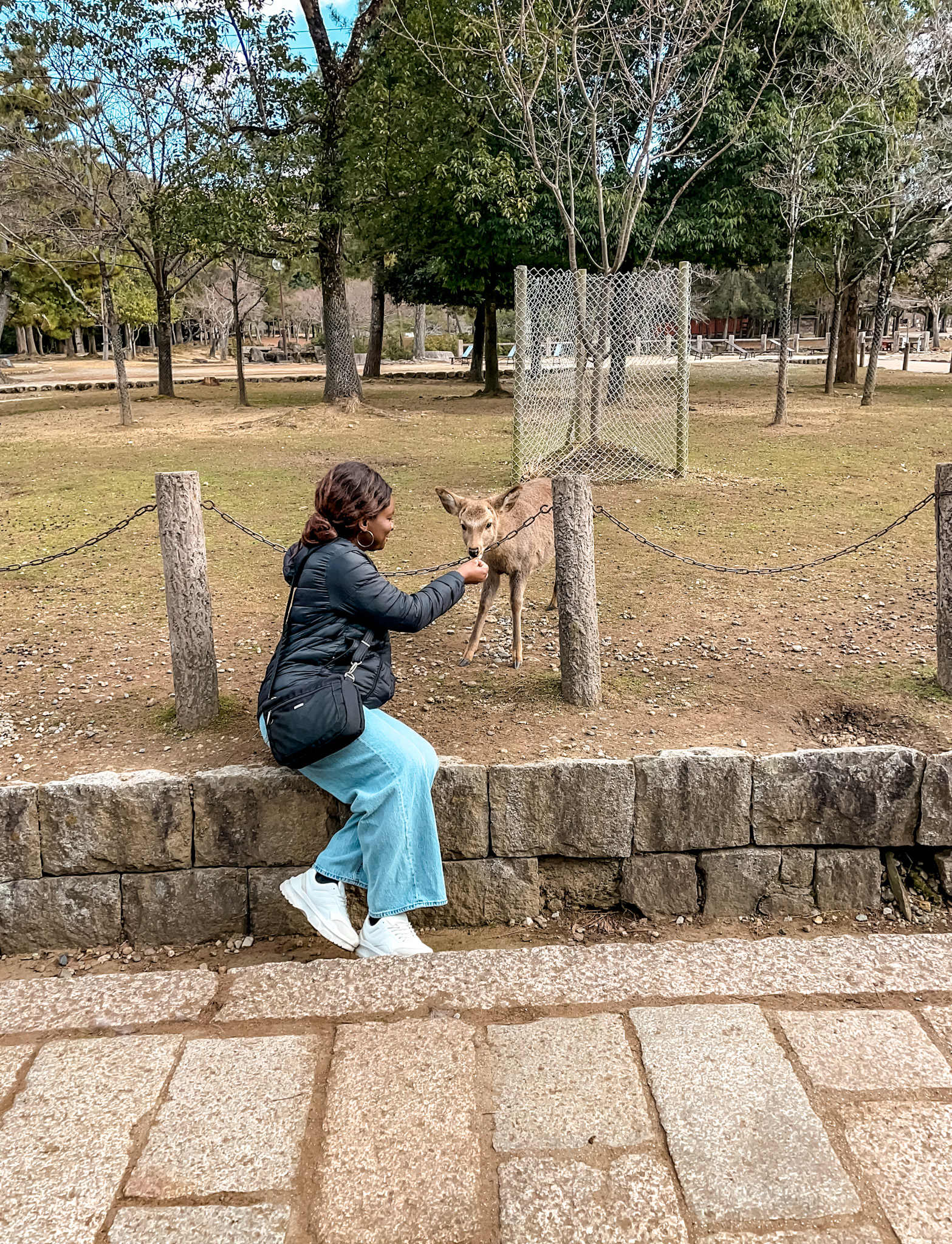
Nara sits in the Kansai Region and is packed with early imperial history, Shintō shrines, Buddhist temples, and a ridiculous number of UNESCO-listed sites in a small area. Most of what you’ll see sits inside or right along Nara Park—a vast historic green space that people (including me) often describe as ~660 hectares when you count the temple grounds folded into it; officially the park’s core is ~502–511 hectares. Either way, it feels huge and walkable.
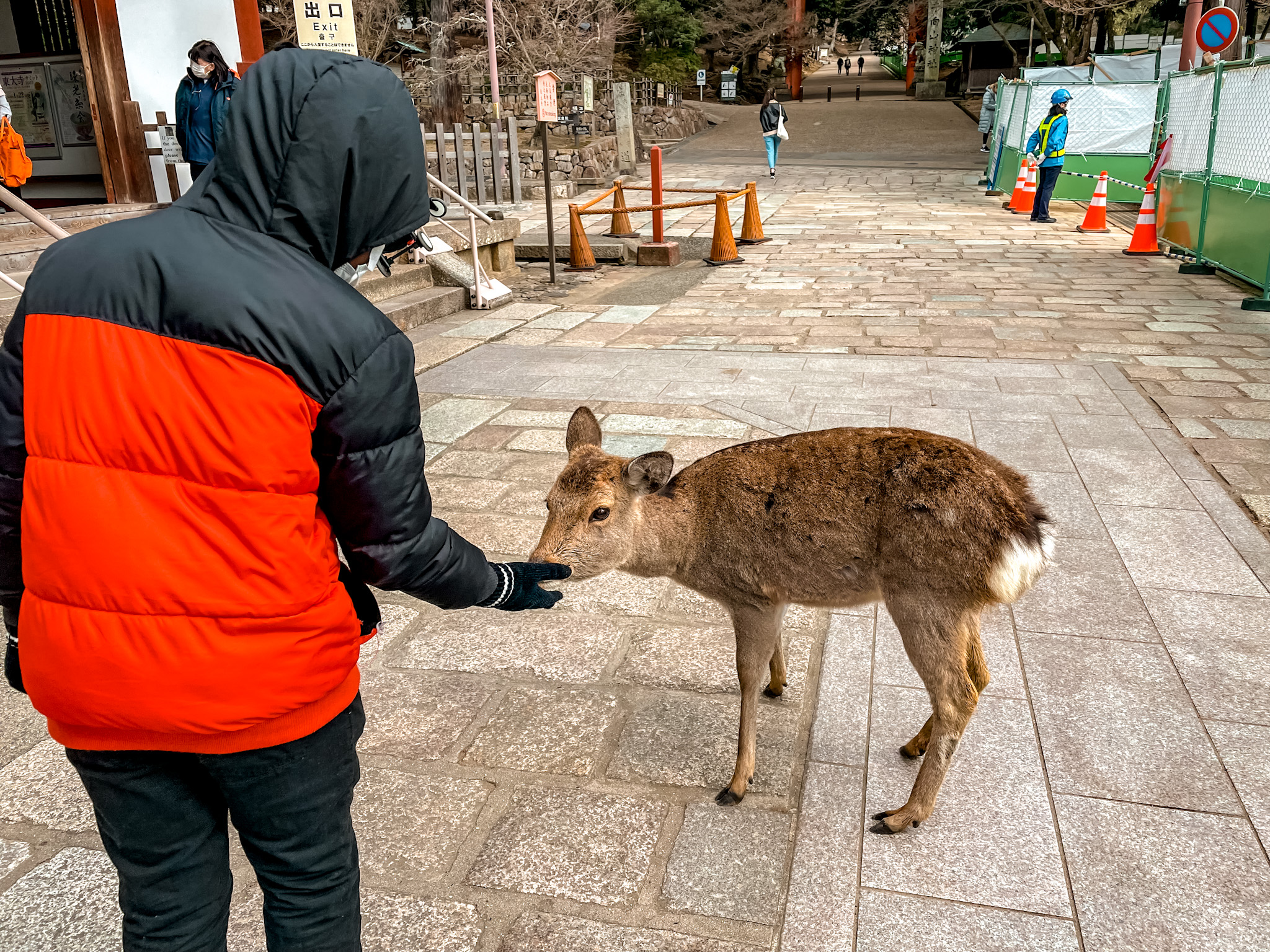
Why Nara Is Special (and what you’ll actually feel there)
Legend says the deity Takemikazuchi-no-Mikoto arrived on a white deer to protect the new capital. For centuries the deer were sacred, killing one was punishable by death until 1637. After WWII, they lost “divine” status but were designated protected natural treasures. That’s why they roam freely, weave through traffic at crosswalks, and (sometimes) bow back when you do. It’s history you can literally feed.
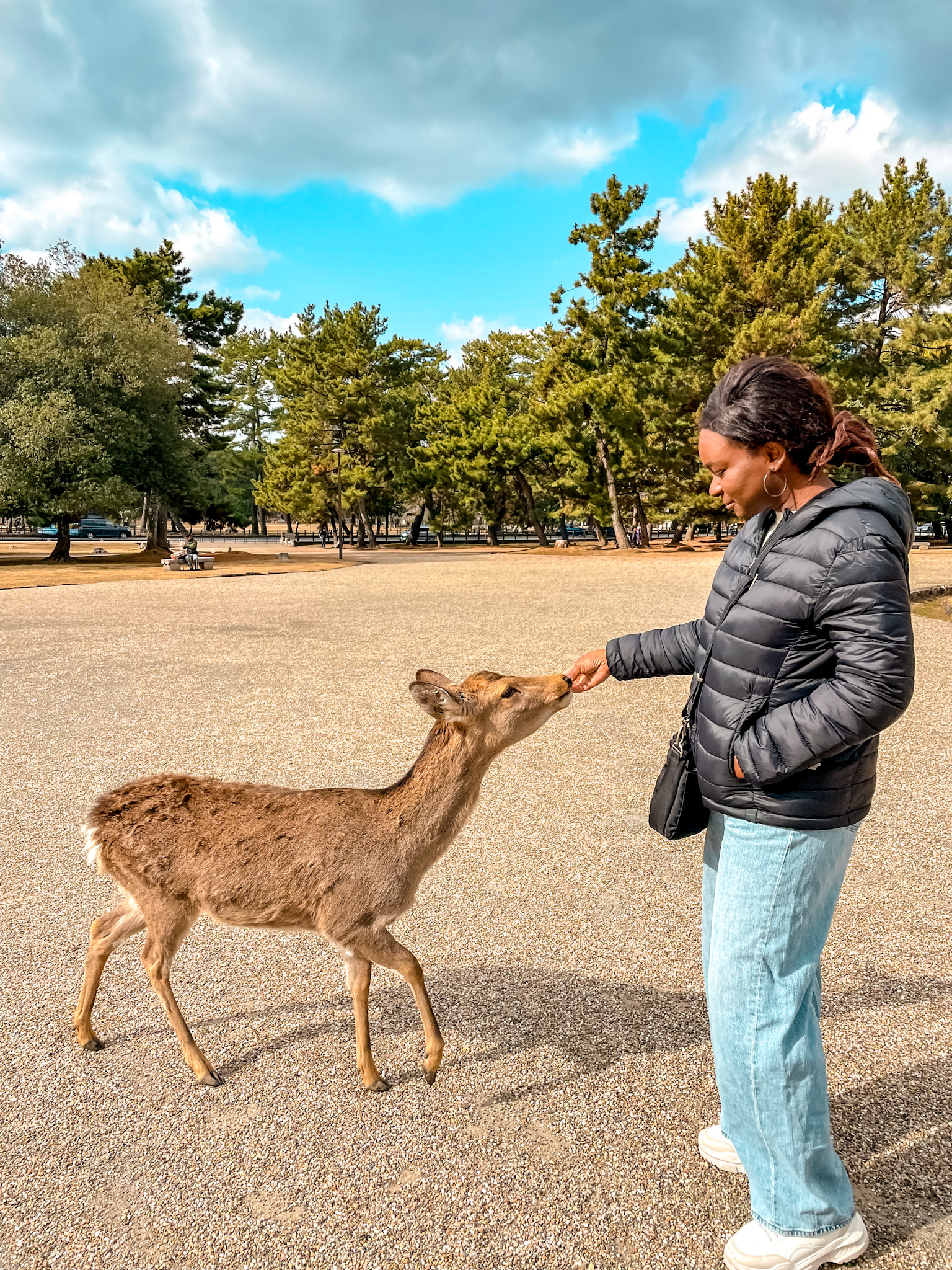
The Bowing Deer 101 (read this before you feed)
- Where you’ll meet them: All around Nara Park, especially near Tōdai-ji, Kōfuku-ji, and along the lawns. There are around 1,200 in and around the park.
- What to feed: Only the official shika senbei (deer crackers). They’re made for deer, don’t give them bread or snacks from your bag. A pack is about ¥200 at park stands (you’ll see stacks of round wafers); in the evening there are also vending machines with boxed crackers.
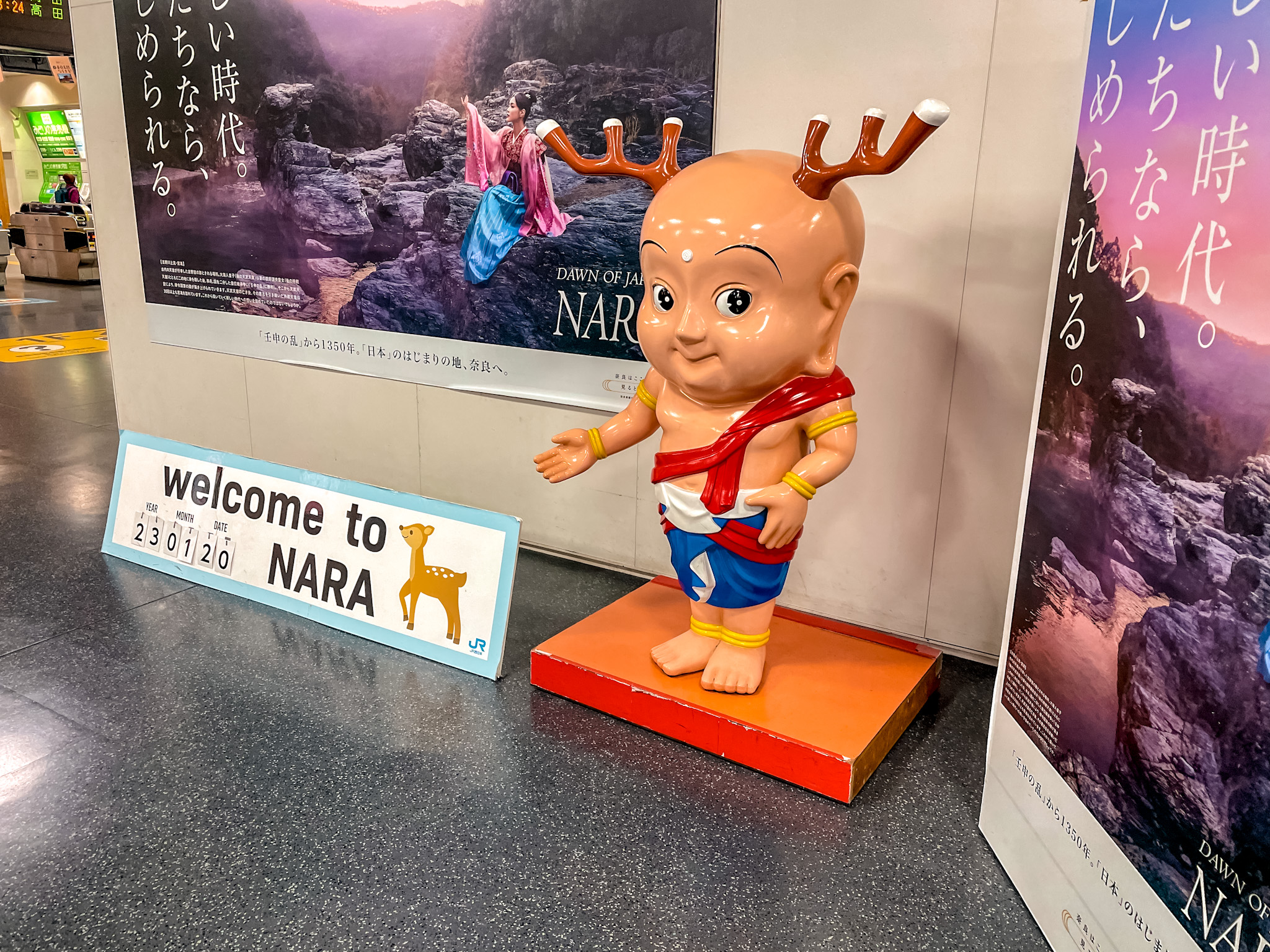
- Vending machines: Newer machines at Rokuen/Kasuga Taisha car park sell a box of 10 (priced around ¥500 when introduced). Handy after stalls close.
- How to get a bow: Hold one cracker up, give a small bow, and many deer will dip their heads back. Feed immediately, teasing makes them feisty. When you’re out, show empty hands and spread your arms like “all gone.” Works like a charm.
- Safety: They are wild. Hide maps/plastic; they’ll try to eat paper. Supervise kids, and step back from antlered males.
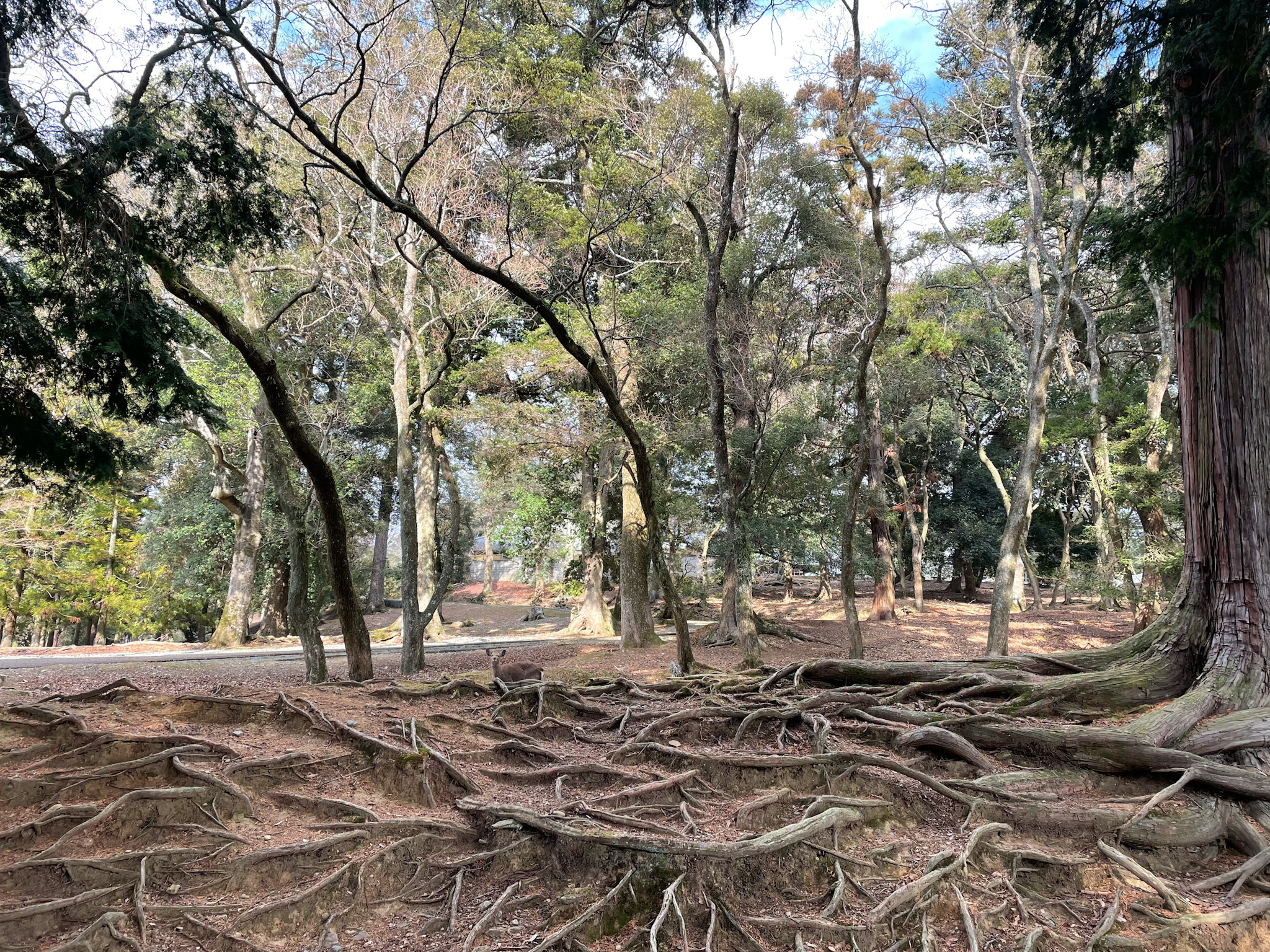
What We Did: Our Nara Day (and what you can copy)
We arrived mid-morning, bought deer crackers, walked temple-to-temple, and snacked every time something looked good (which is often). Here’s the route that flowed:
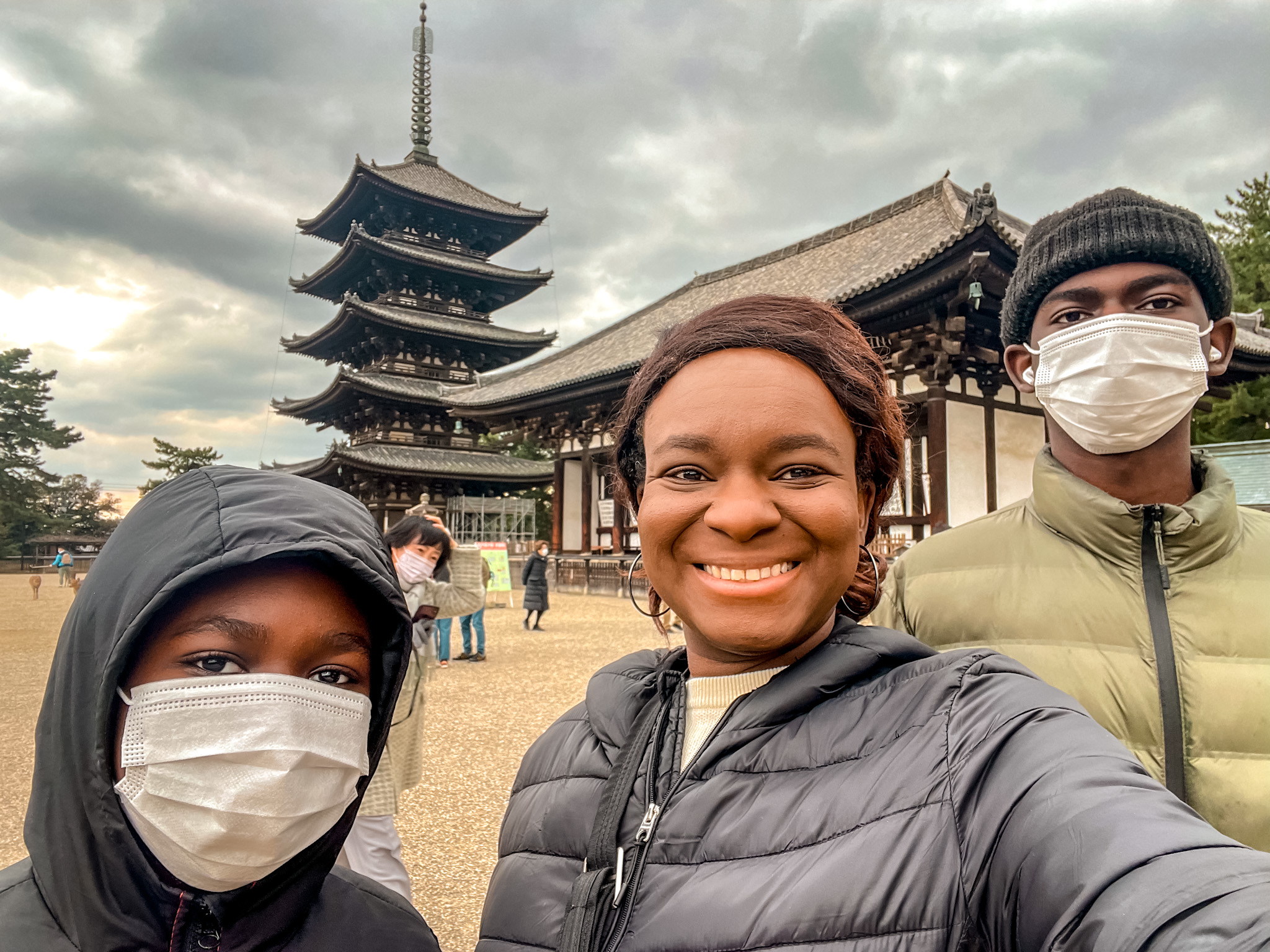
1) Kōfuku-ji (興福寺) — five-story pagoda + quiet start
Kōfuku-ji is one of Nara’s “Seven Great Temples” and a perfect first stop right by the city center. The pagoda is a symbol of Nara—first built in 730, last rebuilt in 1426—and even during repair projects it photographs beautifully from the pond.
2) Stroll the lawns, greet the deer
Cracker time. We bowed, they bowed. I’m still grinning. (Tip: keep one cracker in hand, the rest behind your back.)
3) Tōdai-ji (東大寺) — meet the Daibutsu
Inside the Great Buddha Hall sits a ~15-meter-tall bronze Buddha. Even if you’ve seen photos, the scale hits you—calm, massive, gold-dark in the light. Don’t skip the walk through Nandaimon Gate with its guardian statues.
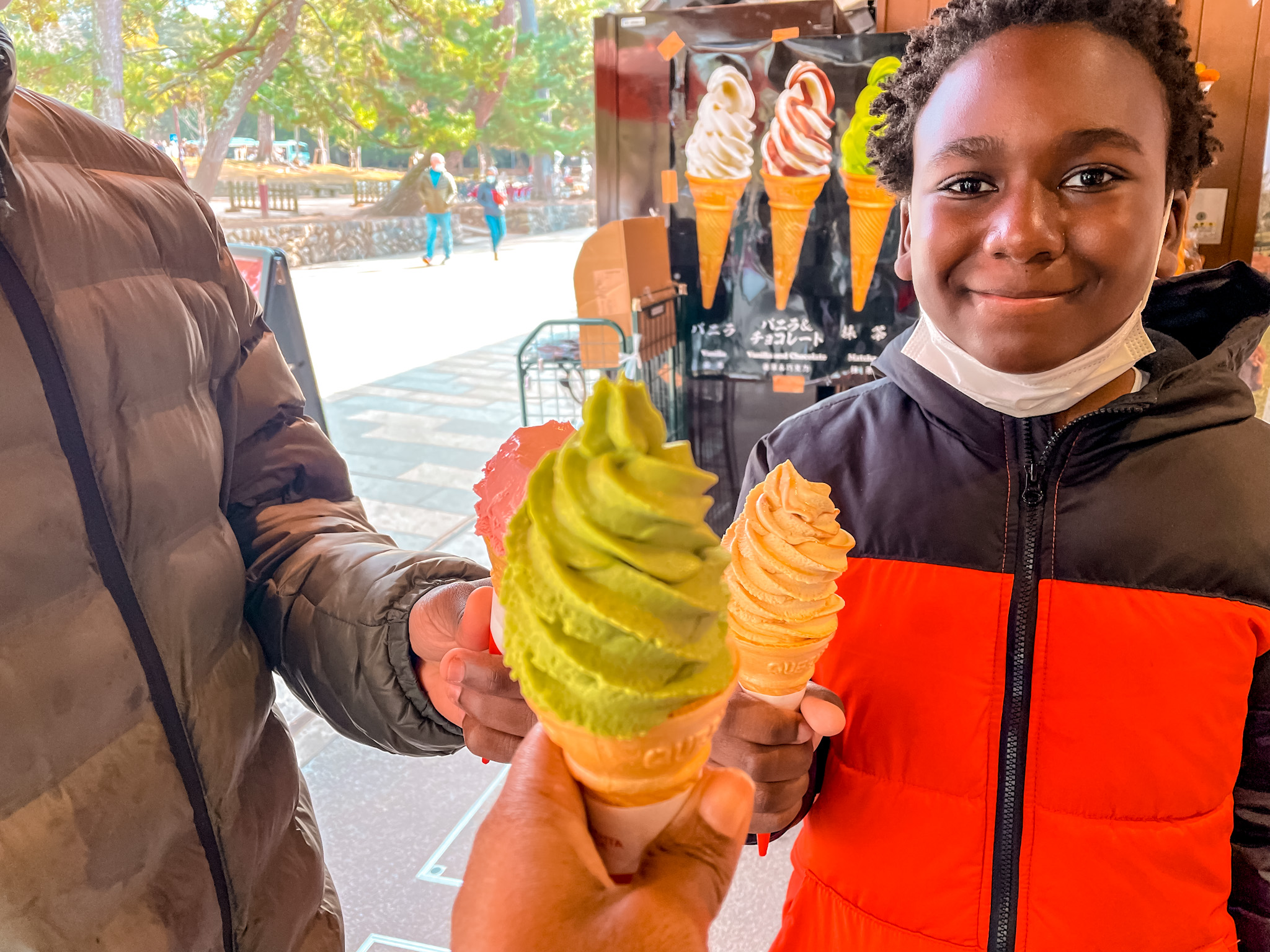
4) Snack breaks (because joy)
We grabbed matcha ice cream, strawberry ice cream, and a strawberry daifuku (mochi) from a tiny spot called Daibutsu.15 along the way—plus another warm street-side snack (a fluffy, steamed bun-style treat—think nikumanvibes). Nara is a sweet tooth’s soft life.
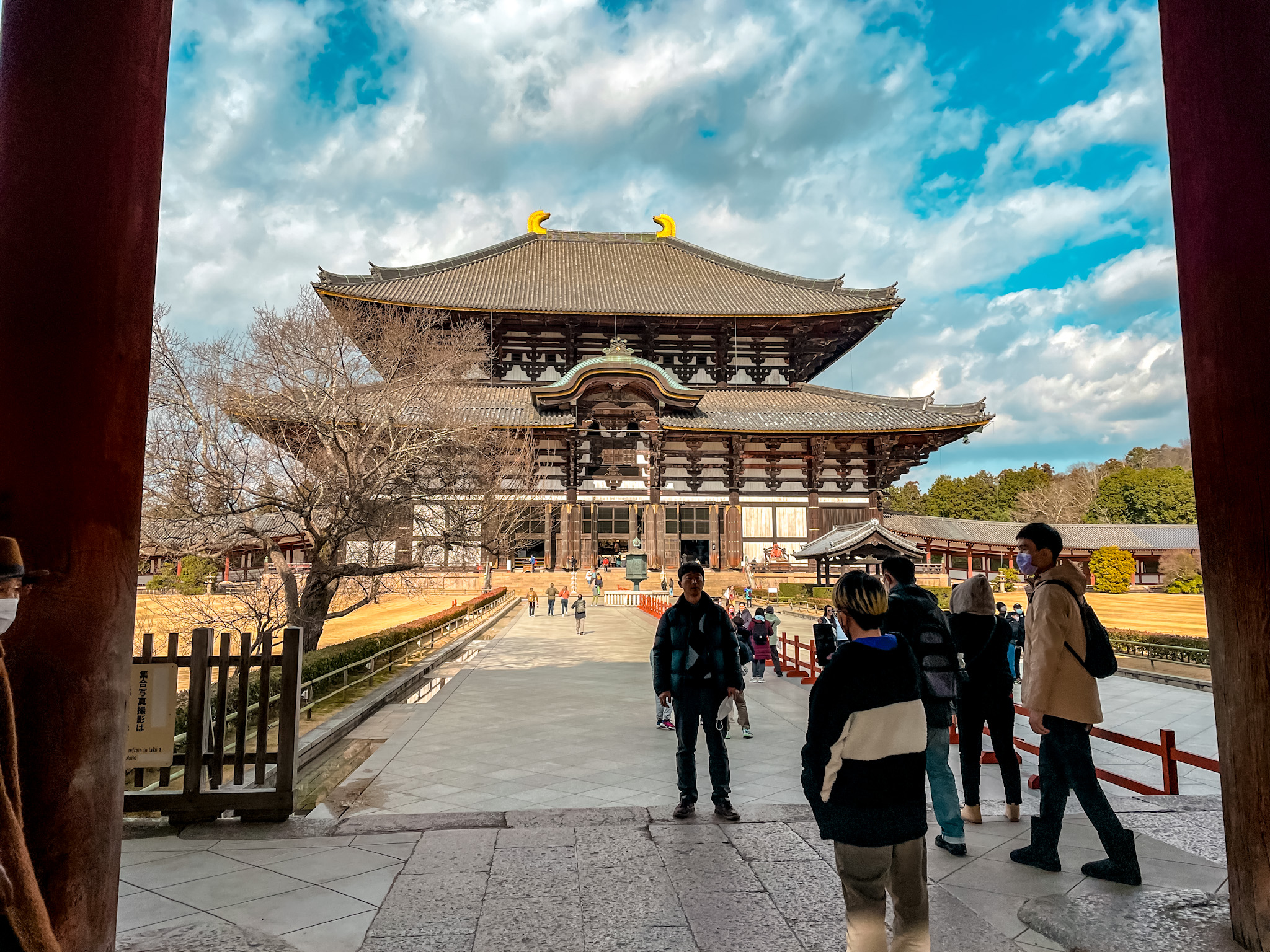
5) Optional add-ons if you’ve got energy
- Kasuga Taisha: lantern-lined shrine paths under deep green forest. (White-deer legend starts here.)
- Naramachi: old merchant quarter - wooden townhouses, cafes, tiny shops.
- Mount Wakakusa: gentle hike or viewpoint if you want sunset over the city (seasonal opening).
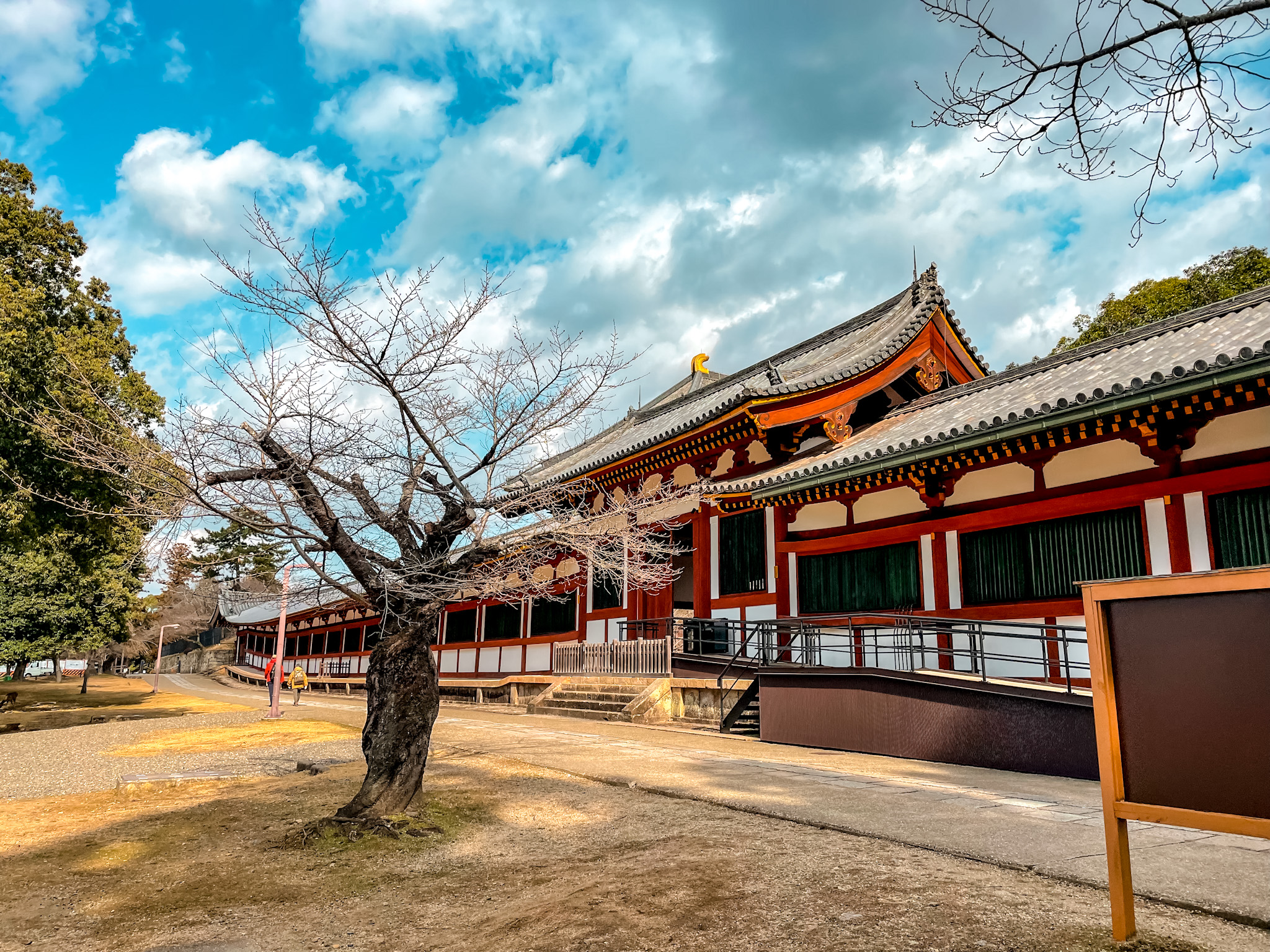
Getting to Nara from Kyoto (step-by-step)
You’ve got two easy train choices:
Option A — JR Nara Line (covered by JR Pass)
- From Kyoto Station, take the Miyakoji Rapid to JR Nara Station.
- ~45 minutes, around ¥720 one-way. Trains run ~every 30 minutes.
- Walk ~20 minutes or bus 5–10 minutes to the park.
Option B — Kintetsu Kyoto Line (closest station to the deer)
- From Kintetsu Kyoto Station (inside Kyoto Station complex), take a Direct Express or Limited Express to Kintetsu Nara Station.
- ~45 minutes (faster if Limited Express), typical fares ~¥710–¥1,300 depending on train/seat. Kintetsu Nara is an 8–10 minute walk to the park lawns.
How we did it: We rode in, tapped out with IC cards (Suica/ICOCA), and walked straight to Kōfuku-ji to start.
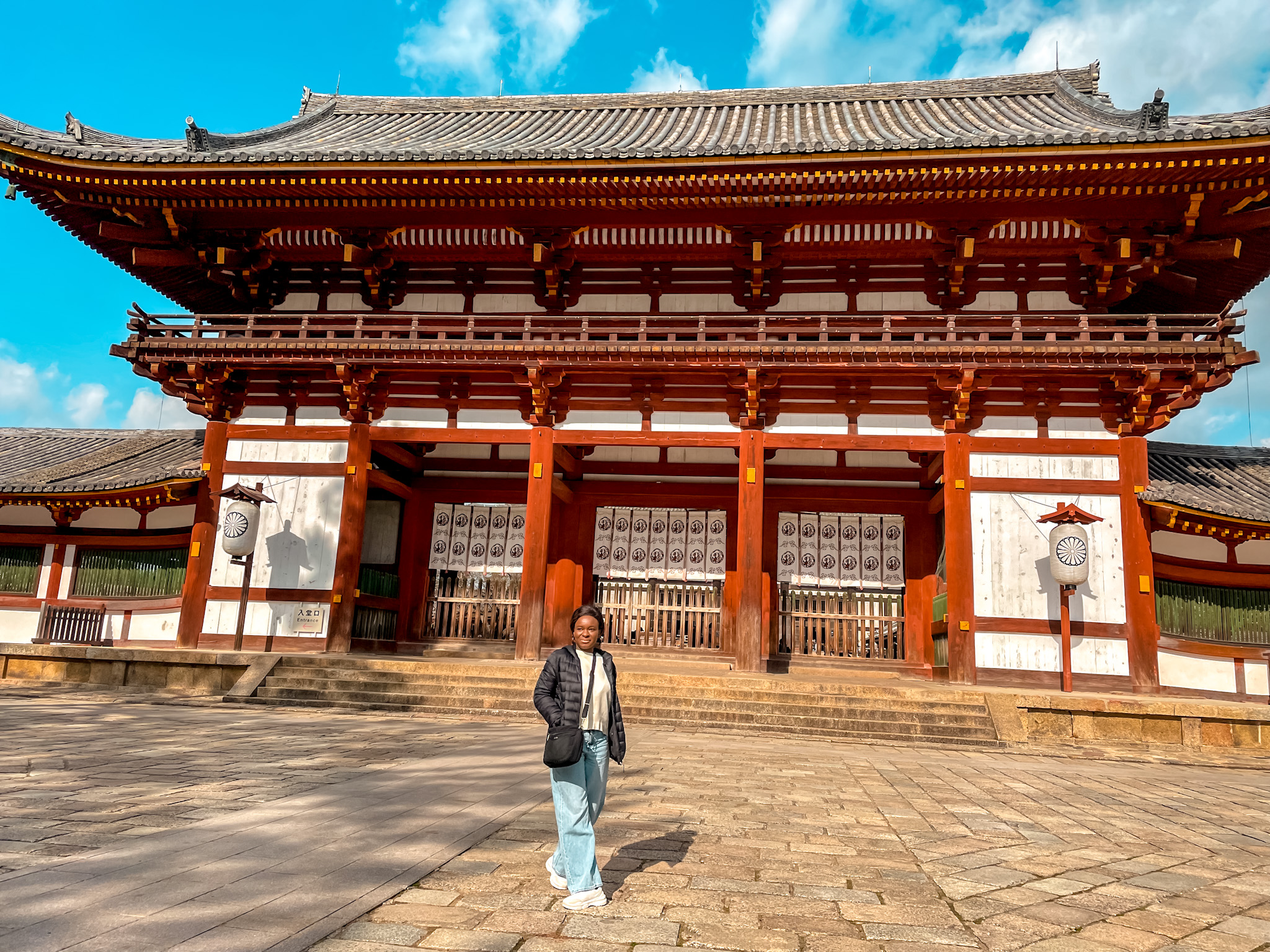
How to Spend One Perfect Day in Nara (sample itinerary)
08:30 Train from Kyoto
09:20 Arrive Kintetsu Nara → quick coffee, bathrooms, grab a map
09:45 Kōfuku-ji (pagoda views + photo at Sarusawa-ike pond)
10:30 First deer meet-and-greet on the lawns (buy crackers)
11:15 Tōdai-ji Great Buddha (Daibutsu), linger in the hall and courtyard
12:30 Snack run: matcha soft serve, strawberry daifuku (Daibutsu.15), or a warm steamed bun
13:15 Stroll to Kasuga Taisha (lanterns + forest)
15:00 Late lunch / tea house inside Nara Park
16:00 Optional: Naramachi wandering or quick bus back to JR/Kintetsu
17:00–18:00 Train back to Kyoto
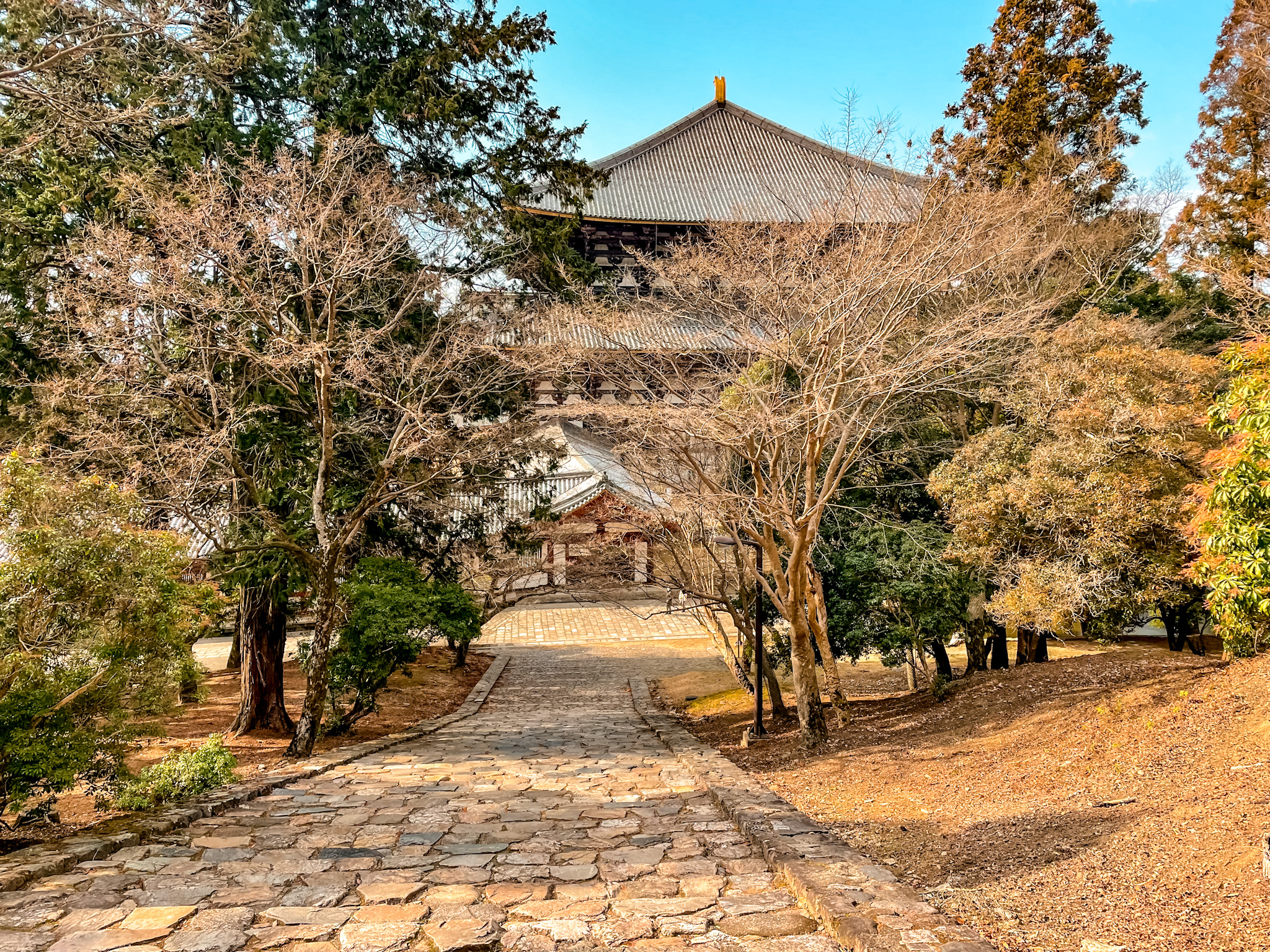
Costs at a Glance (typical)
- Kyoto ⇄ Nara trains: ~¥710–¥1,300 each way depending on route/train. JR Pass covers JR option.
- Deer crackers: about ¥200/pack at stalls; evening vending machines sell boxed sets (launched at ~¥500/box of 10). Japan Guide+2奈良市観光協会+2
- Tōdai-ji Daibutsu Hall: paid entry (worth it).
- Kōfuku-ji museum/halls: some areas free; certain halls/tokens are paid.
- Snacks: ¥300–¥600 for soft-serve, ¥300–¥600 for daifuku; buns/croquettes vary.
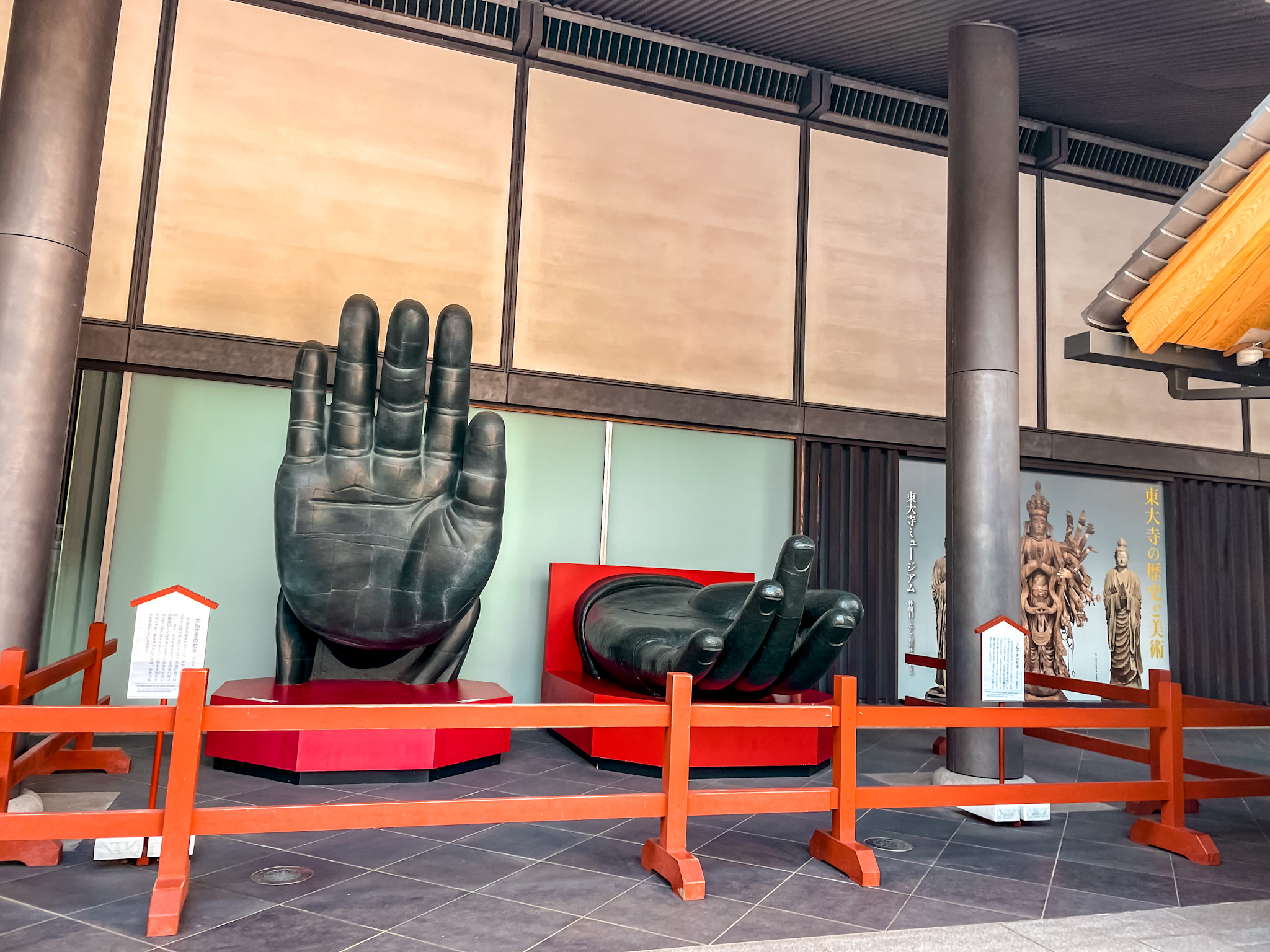
Practical Tips (learned the easy way, so you don’t learn the hard way)
- Best time to go: Mornings beat the tour groups. Spring cherry blossom (late Mar–early Apr) and fall color (mid-Nov) are gorgeous.
- What to wear: Comfortable shoes, layers (shade → sun), a small tote that zips.
- Deer etiquette: Don’t dangle crackers, and don’t hand them a map (they will eat it). When you’re done, arms out = “finished.”
- Where to start: If you arrive via Kintetsu, Kōfuku-ji first sets a calm tone before the crowds at Tōdai-ji.
- With kids: Keep crackers in a grown-up’s hand. Feed one by one. Step away if a deer fixates on your bag.
- Accessibility: Core paths are broad and mostly flat between Kōfuku-ji and Tōdai-ji; expect some slopes near shrines/forest.
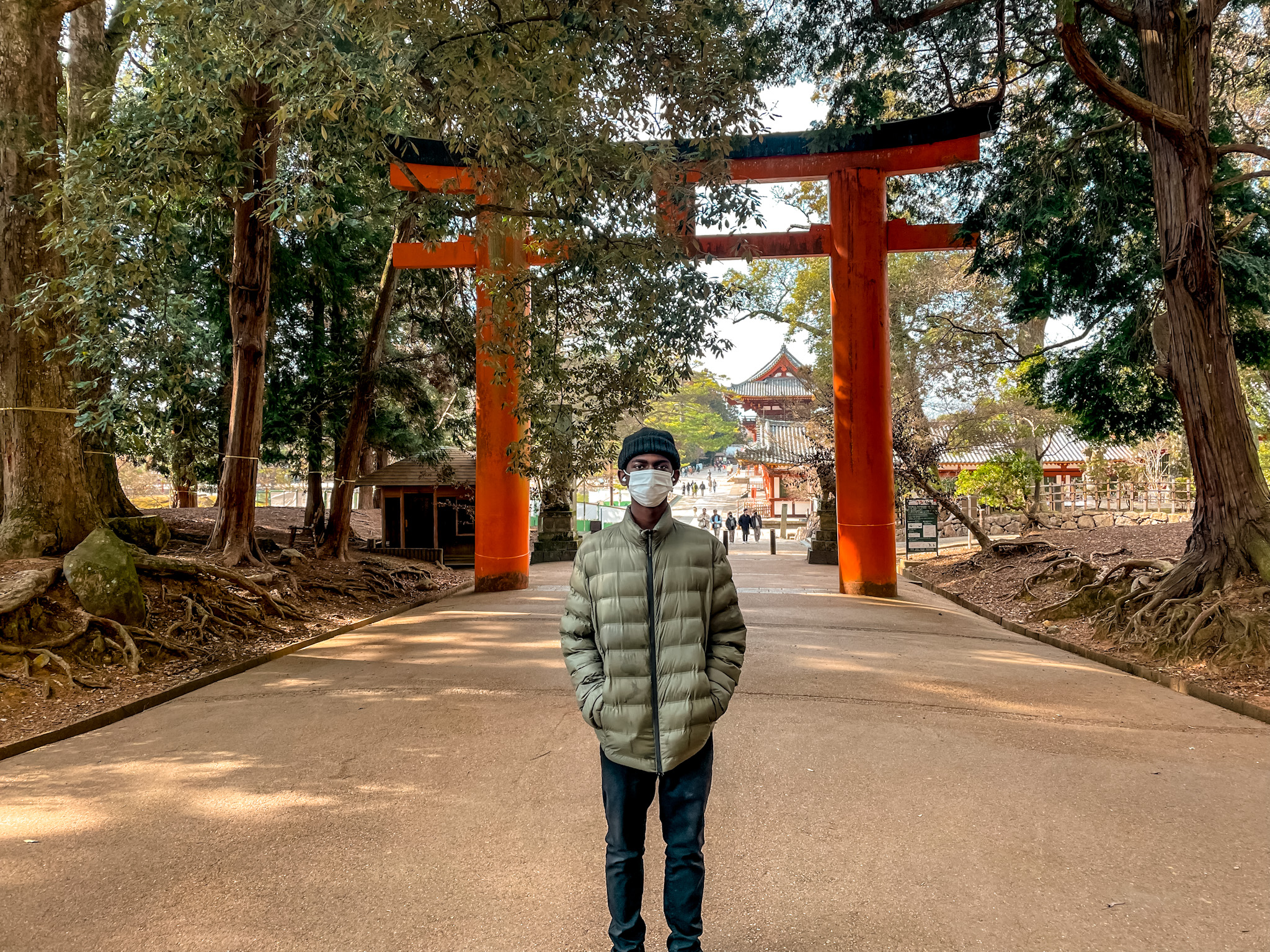
Quick History Hits (for your captions + brain)
- Nara Park’s size is quoted two ways: ~502–511 ha officially; ~660 ha when you include the temple/shrine grounds wrapped by the park. Both you’ll see online and on signage.
- Kōfuku-ji’s five-story pagoda: a national treasure, present structure from 1426, originally dating to 730.
- Tōdai-ji’s Great Buddha (Daibutsu) is ~15 m tall—standing under that hand is a whole moment.
- Deer lore + protection: white-deer legend from Kasuga Taisha; post-war, deer are protected natural monuments.
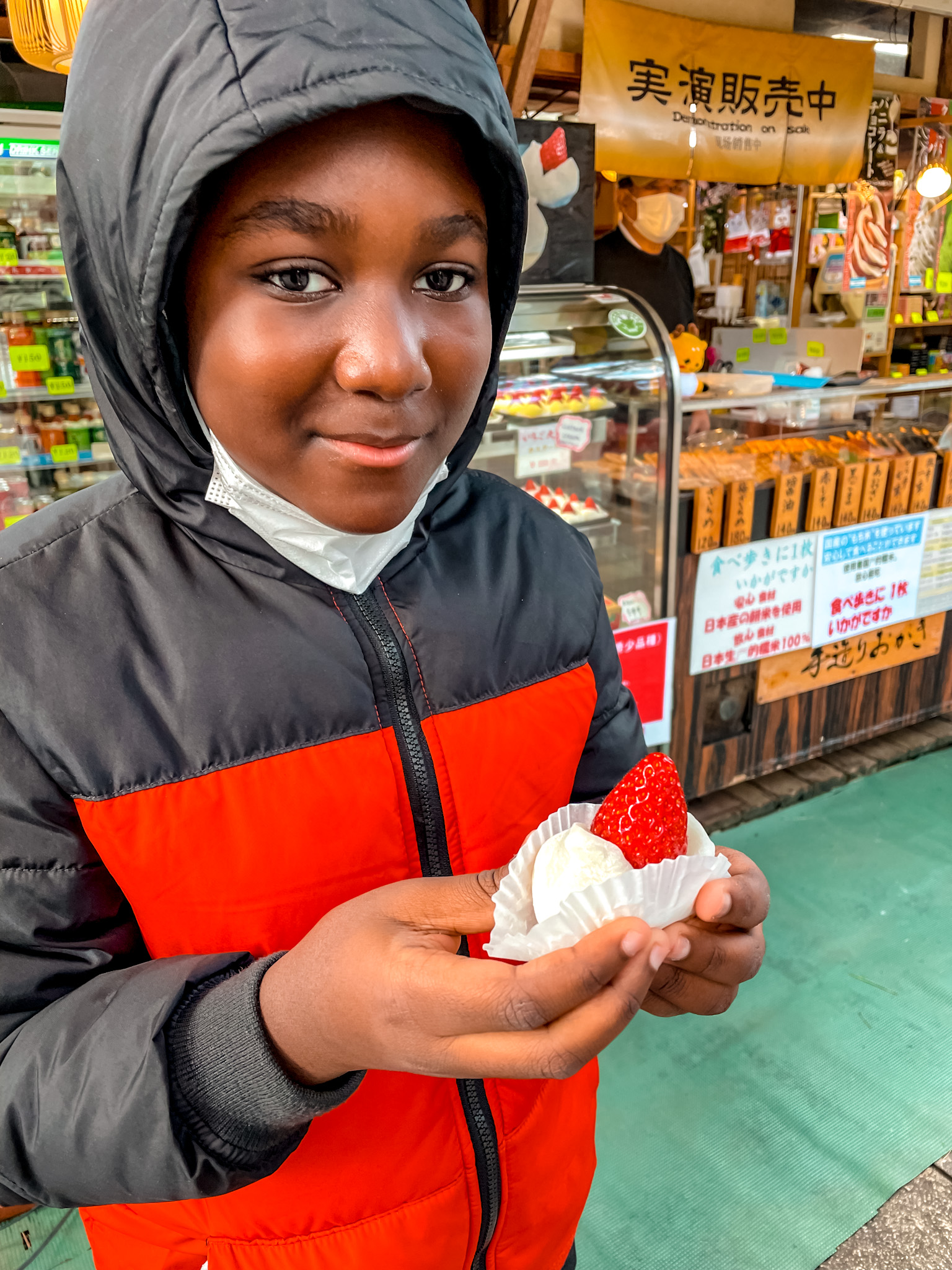
What We Ate (and what you should look for)
- Matcha ice cream (creamy, grassy, perfect between temple stops)
- Strawberry ice cream (because balance)
- Strawberry daifuku (mochi)—we grabbed ours at a tiny shop called Daibutsu.15 near the main sights
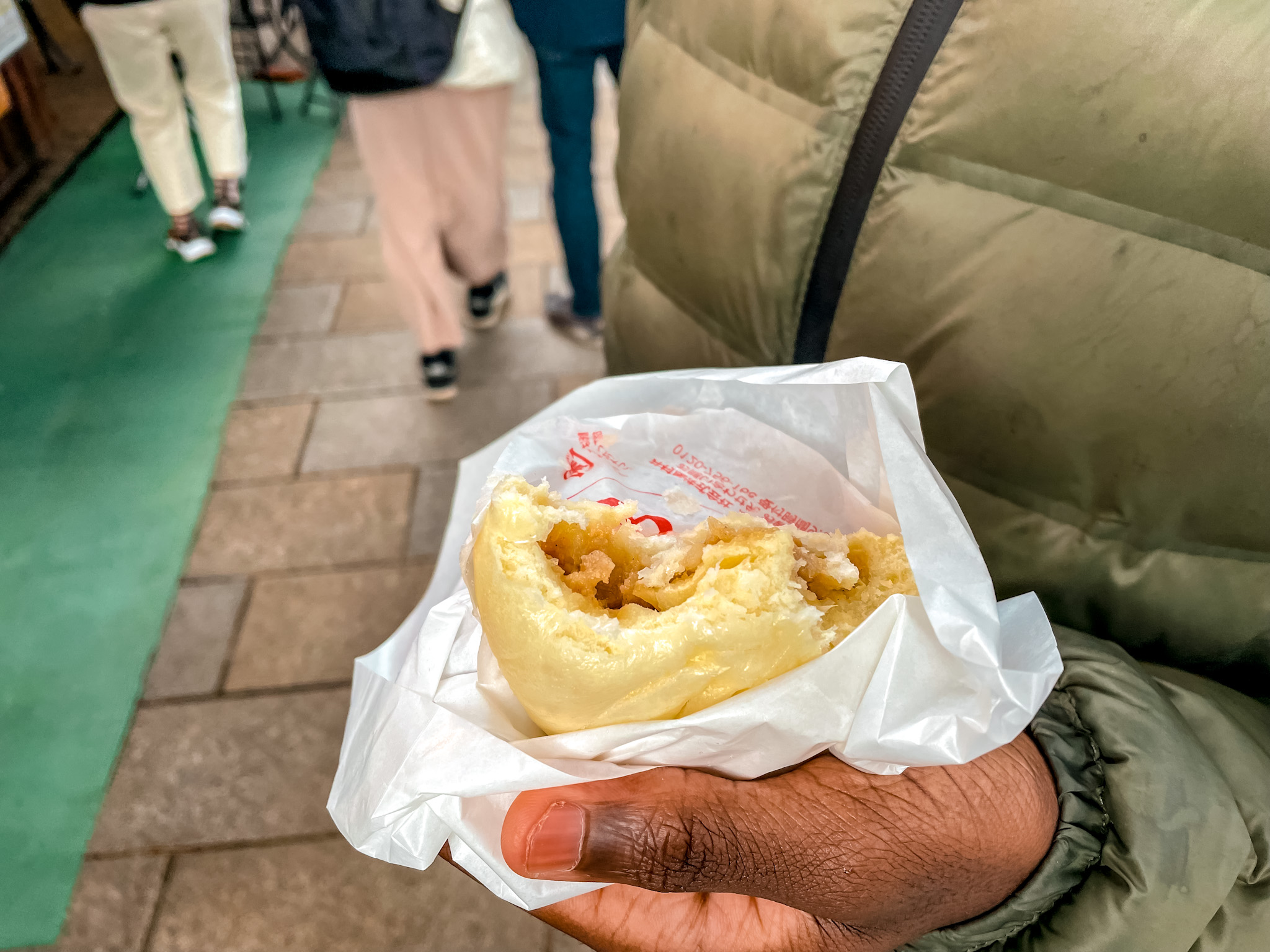
- A warm steamed bun-style snack (soft, pillowy, satisfying between deer bows)
Nara is wonderful for grazing as you go—tea houses inside the park and little kiosks by the paths keep the energy up.
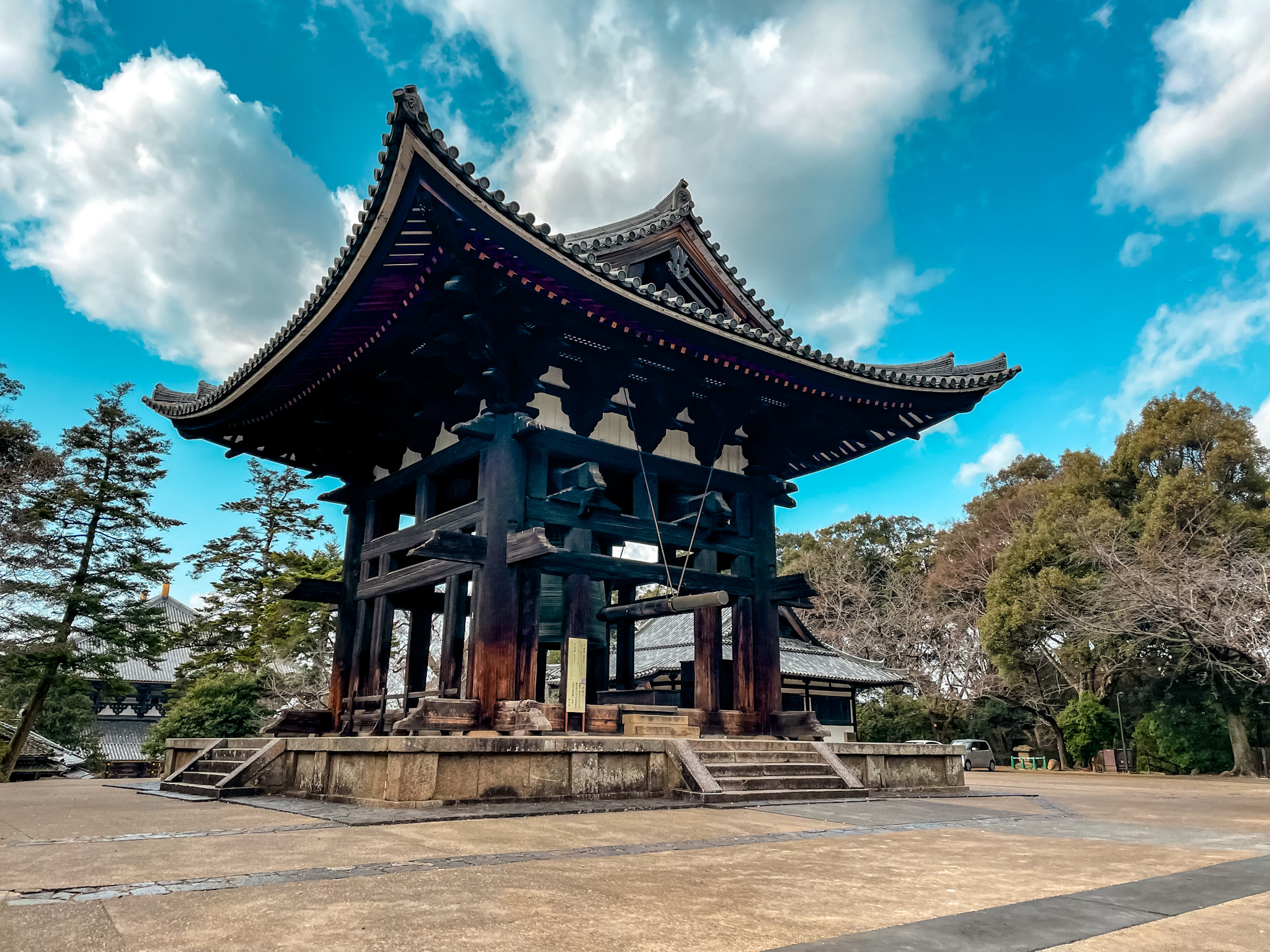
Frequently Asked (so let’s answer)
Do the deer really bow?
Some do! If they’re in the mood (and you’re holding a cracker), a polite bow often gets a bow back. Feed quickly and kindly.
Is a Nara day trip enough?
Yes. One full, well-paced day covers Kōfuku-ji → deer time → Tōdai-ji → snack breaks → Kasuga Taisha → Naramachi, without rushing.
JR or Kintetsu?
If you’ve got a JR Pass or you’re leaving from Kyoto Station, JR is simple. If you want the closest drop-off, Kintetsu Nara puts you right by the park.
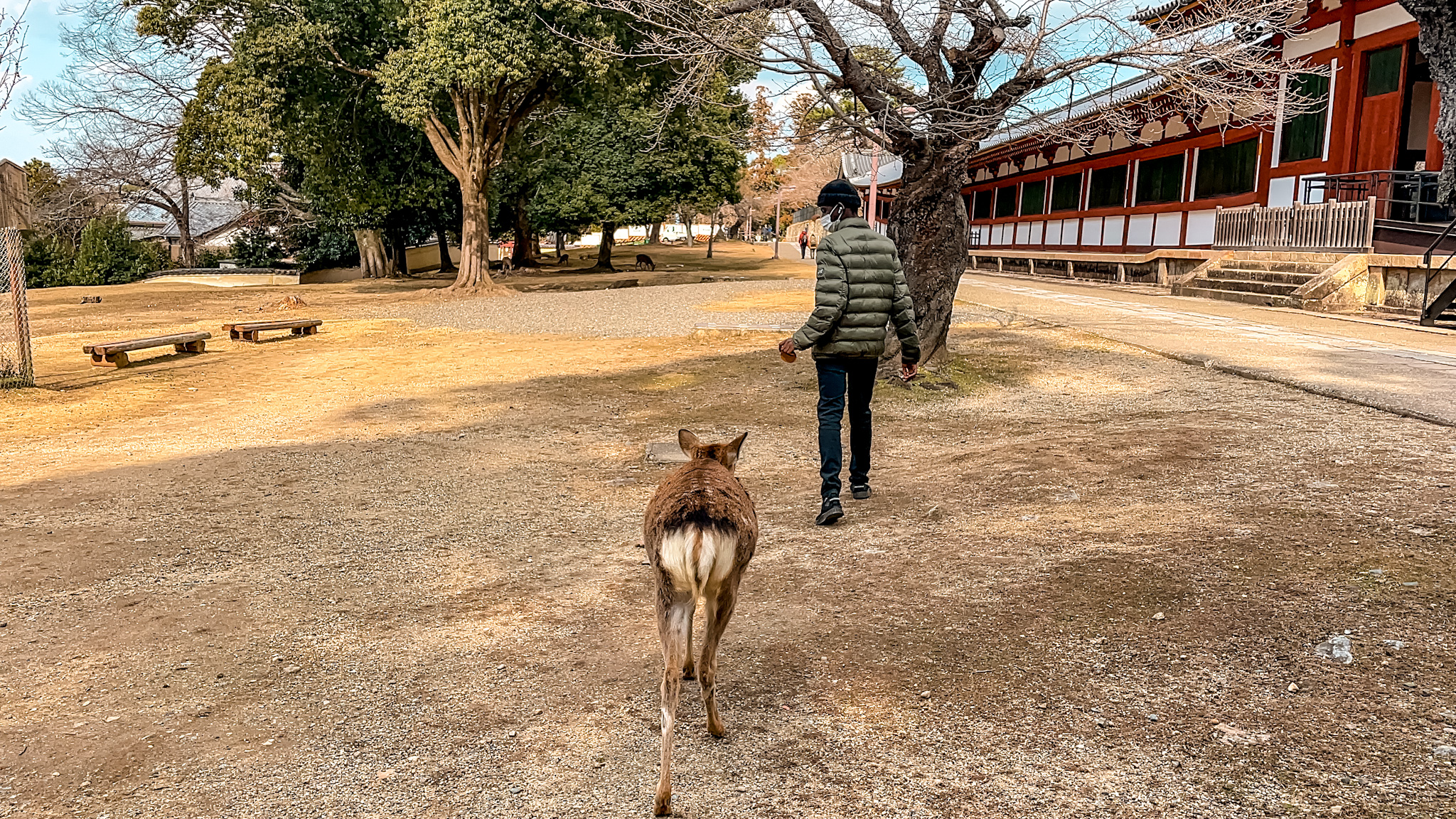
Final Notes (from my heart to yours)
Nara is the kind of place that slows you down without asking permission. We fed deer who bowed back, wandered under cedar and lanterns, stared up at a 15-meter Buddha, and ate matcha like it was a food group. If you’re in Kyoto, give Nara a day. Bow first. Say thank you with a cracker. Let the city’s ancient calm rub off on you.
